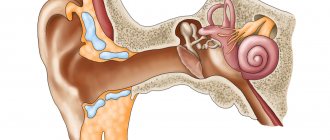If you want to get advice on treatment in Moscow. Fill out the form below:
Lymph node cancer is a malignant neoplasm originating from the lymphoid tissue of the lymph nodes. The lymphatic system is an extensive network of vessels and lymph nodes located throughout the human body, playing an important role in maintaining the body's immunity. During the primary degeneration of lymphoid tissue, lymph node cells begin to multiply uncontrollably, forming a tumor.
The incidence of lymphoma in the structure of cancer diseases in Russia is 4%. The epidemiology of the disease shows that men and women of the Caucasian race are more often affected, and two peaks of growth are observed: cancer occurs at a young age in adolescents, girls and boys from 14 to 30, as well as in older people over 55 years of age.
The relevance of the problem is not only that oncology is found in young people, but also in some aggressive clinical forms that quickly progress and lead to death within a short period of time. This does not mean that cancer is incurable - there are varieties that have benign dynamics: they develop for a long time and metastasize late. But, of course, if the disease is not treated, its consequence is the death of the patient. Only timely detection and therapy give a chance to fight and survive.
The five-year survival rate with early detection and treatment is 60–90%. With an advanced, inoperable oncological process, life expectancy is reduced, the prognosis is unfavorable and medical care consists only of helping to alleviate the patient’s condition.
If you or your loved ones need medical assistance, contact us. The site’s specialists will recommend a clinic where you can get effective treatment:
Causes
The exact causes of cancer development in the lymph node system have not yet been confirmed.
The main factors leading to this disease:
- Negative effects on the body of harmful carcinogenic and chemical substances. Many patients with this type of cancer have been in contact with toxic substances for a long time.
- Frequent exposure to direct sunlight. Scientists associate the development of many cancers with the effects of ultraviolet radiation on the body.
- Infection of the body - when infected with AIDS or HIV, the functioning of the body's immune system significantly deteriorates, which is why it is susceptible to cancer.
- Metastases - very often, in the presence of cancer in any organ, the spread of metastases occurs through the lymphatic system.
There are other factors that influence the development of cancer:
- heredity;
- smoking and alcohol abuse;
- abuse of junk food;
- late pregnancy;
- age over 50 years.
With age, the likelihood of the occurrence of pathology increases, which is why older people are more at risk of developing cancer. To identify cancer at the beginning of its development, it is necessary to become familiar with the possible clinical manifestations of the disease. Diagnosis of a cancerous tumor in the lymph node system at the initial stages of its development allows us to select the most effective method of therapy.
Classification
There are about thirty types of possible tumors of the lymph nodes, they are divided into two main ones:
- Hodgkin's lymphomas are diagnosed in approximately 30% of cases of cancer of the lymph nodes. This form of cancer is characterized by the rapid growth of abnormal cells, causing the body to completely lose its defense against infections. Hodgkin's lymphomas metastasize quite quickly, affecting the vital organs of the body.
- Non-Hodgkin's lymphomas - tumors of this group are diagnosed in 70% of cases. Such neoplasms can form in any part of the body where lymphatic tissue is present. The most common location is the lymph nodes.
We recommend reading: Cecal cancer - first symptoms, causes, diagnosis, treatment
In medical practice, it is customary to divide Hodgkin and non-Hodgkin lymphomas into benign and malignant tumors. Benign tumors are characterized by slow development and damage to only one area. Malignant lymphomas usually develop rapidly and metastasize early.
How does pathology manifest itself?
Symptoms of lymph node cancer development are determined by its stage. Immune links begin to hurt as they increase. This is explained by the expansion of the fiber surrounding the formation.
The main manifestations of the oncological process are:
- fever, which is most often observed in the evening;
- profuse night sweats;
- skin itching;
- a feeling of squeezing of the affected tissues.
Nonspecific signs of lymph node cancer are:
- decreased performance due to fatigue and weakness;
- poor appetite;
- difficulty breathing;
- frequent infectious diseases;
- anemia;
- significant weight loss;
- disruptions in the functioning of the gastrointestinal tract.
Cancer of the lymph nodes is not always accompanied by their enlargement. Changes in size are observed in approximately 50% of patients. The symptoms listed above cannot be considered individually as signs of cancer.
Features of the clinical picture of the oncological process depend on the location:
| The area where the affected nodes are located | Signs |
| Rib cage | Shortness of breath, cough, superior vena cava compression syndrome, swelling of the upper torso, breathing problems |
| Peritoneum | Feeling of heaviness in the stomach, bloating and abdominal pain |
| Groin | Swelling of the lower extremities |
Oncology of the skin lymph provokes the appearance of erosions, as well as conglomerates of immune links. In this case, general symptoms are observed that occur during the formation of atypical cells.
The presence of malignant tumors of the stomach leads to cancer of the lymph nodes of the supraclavicular region on the left side of the body. Damage to the lungs becomes the culprit for metastasis of the supraclavicular glands.
In cancer of the tongue and lips, atypical cells penetrate the submandibular immune links. The affected thyroid gland often gives metastases to the upper jugular and supraglottic formations.
Damage to the lymph nodes in breast cancer is accompanied by their enlargement in the axillary region. The only reliable diagnostic method is a biopsy, which allows one to evaluate the structure of the cells.
Stages
The development of cancer in the lymphatic system goes through four stages:
- Stage zero - it is extremely rare to detect pathology at this stage, since the tumor does not cause clinical manifestations.
- The first is that one lymph node or local area of the lymphatic system is affected. It is possible to identify the disease at the first stage of development only by conducting a full examination.
- The second is that at this stage the pathology can already spread to two areas of the lymph nodes, as well as affect any neighboring organ.
- Third - when oncological pathology reaches the third stage, it almost completely spreads to all lymph nodes of the body (neck, groin, submandibular region, etc.).
- Fourth - the prognosis for patients at the fourth stage of development of this type of cancer is usually unfavorable. The disease is constantly progressing, and any treatment methods are not effective.
The most favorable prognosis for cancer of the lymph nodes is possible only in the initial stages of the development of cancer pathology.
Patients in the final stages of lymph node cancer are usually prescribed palliative treatment aimed at reducing clinical manifestations and improving the patient's quality of life.
Types and stages
There are 2 forms of lymph node cancer:
- non-Hodgkin's lymphomas;
- lymphogranulomatosis.
Non-Hodgkin's lymphomas affect the entire lymphatic system, and, as a rule, originate from the immune system. They occur more often than lymphogranulomatosis, but are the most dangerous because they develop very rapidly. Their etiology lies in the mutational transformation of B and T lymphocytes.
Pathology goes through 4 stages. With timely treatment, the prognosis for the patient is relatively favorable.
How lymph node cancer develops is presented in the table:
| Disease stage | Characteristic |
| 1 | Damage to one group of nodules |
| 2 | Cancer of 2 or more anatomical areas |
| 3 | Oncology of the lymph nodes on both sides of the diaphragm |
| 4 | Atypical cells invade the bone marrow, liver, kidneys, heart and other organs, lymph nodes disintegrate and tumor necrosis occurs |
Symptoms
Lymph nodes with cancer increase in size, which is the first sign of this pathology.
It is also worth familiarizing yourself with other symptoms of lymph node cancer in advance:
- constant weakness and fatigue;
- rapid loss of body weight;
- increased sweating;
- swelling of the neck veins;
- dyspnea;
- the appearance of itching in the affected area.
Inflammation of the lymph nodes in cancer is also one of the first signs of the disease. Sometimes the disease can cause enlargement of the lymph nodes near the aorta. In this case, a sign of lymph node cancer is sometimes aching pain in the lumbar region.
If you have an aggressive form of lymph node cancer, the symptoms may be more significant:
- fever;
- anorexia;
- feelings of severe weakness;
- very large lymph nodes.
This condition indicates a negative prognosis, since the pathology spreads at high speed in the body. The rapid emergence of secondary foci of cancer in other organs and systems of the body is possible.
We recommend reading Lip cancer - what the initial stage looks like, the first symptoms and signs
Primary symptoms of cancer of the lymph nodes under the arms have the following manifestations:
- armpits look swollen;
- you can feel a tubercle in the armpit;
- itching occurs;
- the temperature constantly remains at 37.5 degrees;
- the patient sweats profusely.
Depending on the location, cancer of the lymph nodes in the groin of women is diagnosed in 35%. Neck disease is detected in 31% of patients. Armpit cancer occurs in approximately 28% of cases. Other locations of cancer in the lymphatic system are detected in only 6% of patients.
Stages of development
At the initial stage of damage to the lymphatic system, one node is affected. The patient does not feel pain, but becomes irritable, feels weak, and sweats profusely at night. Sometimes the temperature rises a little. Pathology is usually detected when visiting doctors with another problem.
At the second stage, several submandibular nodes enlarge. Atypical cells form in the collarbone area and armpits. The spread of cancer leads to:
- to lack of appetite;
- nausea and diarrhea;
- sudden weight loss;
- worsening mood.
The skin at the site of the tumor turns red and itches. A person develops anemia and severe weakness.
When the cancer enters the third stage, the lymph nodes located in the groin, peritoneum, diaphragm, and neighboring organs are affected. The patient constantly has a high temperature and pain. The general condition deteriorates sharply.
At the last stage, the tumor metastasizes to distant tissues. Symptoms of cancer of the lymph nodes in the neck appear depending on which organs are affected by malignant cells. The fourth stage of the disease is characterized by low hemoglobin. The person coughs heavily, chokes, suffers from headaches, itching and burning throughout the body, and cannot move.
The growth and spread of the tumor is accompanied by:
- the appearance of jaundice;
- the addition of fungal diseases;
- frequent fainting;
- atrophy of the spleen.
At this stage of lymph node cancer, metastases affect the liver, brain, lungs, and bone tissue. It is almost impossible to cure a person at this stage.
Diagnostics
When there is a suspicion that cancer has developed in the lymph node system, it is necessary to immediately go to the hospital and undergo a full examination. During an external examination for cancer, the doctor palpates the lymph nodes to determine their size.
The doctor may prescribe the following diagnostic procedures:
- general and biochemical blood tests;
- biopsy - taking tumor tissue for histology;
- ultrasound examination (ultrasound);
- radiography;
- computer and magnetic resonance imaging (CT and MRI).
These diagnostic methods allow you to accurately determine the type of tumor and the stage of its development. To detect cancer at the very beginning of its development, a test for tumor markers is considered one of the very effective diagnostic methods. These are specific proteins, the concentration of which in the blood increases when there is a cancerous tumor in the body. To diagnose lymphoma, a blood level test of microglobulin (B2) is performed. For testing, blood must be drawn from a vein.
Treatment
Treatment tactics for cancer in the lymph node area depend on certain factors:
- tumor localization;
- extent of the lesion;
- stage of development;
- tumor size;
- age and condition of the patient;
- presence of concomitant diseases.
The following methods are commonly used to treat lymph node cancer:
- surgical intervention;
- radiation therapy;
- chemotherapy.
Depending on the type of tumor, location and other factors, each patient is prescribed an individual course of therapy. After a course of therapy, patients are required to undergo a long period of rehabilitation. During treatment, blood purification (plasmopheresis) is recommended.
Surgical intervention
Surgery is the most effective way to treat cancer that forms in the lymph nodes. During surgery, the doctor removes the tumor along with the affected lymph node. To prevent recurrence of the pathology, regional lymph nodes are also removed. Tumors in the neck area are most dangerous, since this location makes surgery difficult.
Radiation therapy
This method of treatment can be used both in the preoperative period and after tumor removal. This method allows you to slow down the development of the tumor and reduce its size. Radiation can be combined with chemotherapy for inoperable tumors. The greatest effectiveness of radiation therapy is observed when treating small tumors at the initial stages of development.
We recommend reading Infiltrative breast cancer - types, causes, symptoms and treatment
Chemotherapy
Treatment with chemotherapy involves the use of special drugs. This method of treatment is effective if not only the lymph nodes are affected, but also other organs in the body. Chemotherapy can be prescribed as an independent method of treating cancer, or in combination with other methods. In a cancer patient, chemotherapy drugs may cause some side effects, which is considered the main disadvantage of this treatment method.
Life expectancy for neck lymph node cancer
Patients who have been diagnosed with cervical lymph node cancer are most concerned about how long they will live with this pathology. No doctor can answer this question. Depending on the stage of the disease, age, and results of therapy, predicting life expectancy is individual for each patient.
However, there are tentative “calculations”:
- Surgical treatment when diagnosing early-stage cancer ends in complete healing. Relapses become impossible, and the patient is completely healthy.
- Diagnosed stage three cancer in approximately 50% of cases gives a chance of life expectancy of about 5 years.
- Diagnosed stage 4 cancer almost always ends in death. Only 10% of people survive.
An oncologist, assessing each patient individually, can make a prognosis. For example, patients who have only 1 factor that worsens health indicators, according to statistics, live another 6-10 years in 70% of cases.
Patients with the presence of 1-2 factors that negatively affect the clinical picture live for about 5 years in 50% of cases. Most die because the disease cannot be treated, relapses occur, and the cancer returns.
Having 4-5 factors at the same time, people live 1-2 years. Only 26% of patients have a chance to live 5 years.
Among the factors influencing life expectancy are the following:
- LDH level that should be absent in a healthy person.
- Age.
- Stage of the disease.
- Patient status.
- Presence of metastases.
For example, if a 25-year-old patient has stage 1 oncology of the cervical lymph nodes, there is no LDH, no metastases have occurred, and his general condition is functional, then the chances of a complete recovery are high, and life expectancy is not in danger.
- If a 25-year-old patient is diagnosed with stage 2 cancer, LDH is elevated, there has been no metastasis, and his general condition is working, then he has a chance to live from 5 to 10 years.
- If the patient is 30 years old, grade 2, LDH is elevated, metastases have appeared, and he is in working condition, then he has a chance to live for 2-5 years.
- If the patient is 60 years old, LDH is elevated, grade 3, the condition is severe, metastases have occurred, then the maximum life expectancy is 2 years.
A timely visit to a specialist if you suspect an enlarged lymph node will ensure prompt elimination of the disease. Maintaining a healthy lifestyle, the ability to listen to your body, paying attention to your health, and seeing a doctor at the first symptoms are faithful companions to longevity in a healthy body.
Surgical treatment of infectious, viral, fungal diseases and preventive measures to increase immunity reduce the risks of oncology. You should remember the saying “a healthy mind in a healthy body”, not forgetting to take care of your spiritual component.
Why does the left lymph node in the neck hurt?
Previous post
How to shrink lymph nodes in the neck
Next entry
Consequences and rehabilitation
If a cancerous tumor of the lymph nodes has been diagnosed, the main consequence of this pathology is the death of the patient. If the tumor was diagnosed too late, with metastasis, treatment effectiveness is observed in only 20% of patients. In the final stages of the pathology, patients are prescribed palliative treatment, which allows them to slightly weaken the clinic and improve the quality of life.
After treatment of any cancer, rehabilitation is important. The rehabilitation course may include different areas:
- psychological rehabilitation;
- physiotherapy;
- normalization of metabolic processes in the body;
- restoration of cognitive functions;
- prevention of lymphostasis.
These methods will allow the patient to quickly regain strength and return to normal life.
Prognosis and prevention
In case of lymph node cancer, prognosis for recovery primarily depends on the degree of development of the tumor at the time of diagnosis. 80% survival rate is observed only if cancer is diagnosed at the 1st stage of development. If the tumor is detected at stages 2-3 of cancer, patient survival is reduced to 40-60%. In the later stages of the disease, a favorable outcome is possible only for 10% of patients. Stage 4 lymph node cancer cannot be treated, as it has multiple metastases throughout the body.
It is not yet possible to guarantee the development of cancer, but it is possible to reduce the risk of morbidity and eliminate provoking factors. It is also important to regularly undergo a complete medical examination, which allows you to detect cancer at the very beginning of its development. In this case, treatment will be most effective.
Types of forms of lymph node cancer
Cancer of the lymph nodes is divided into 2 types.
Hodgkin's lymphoma
The disease is quite rare, occurring in only 11% of all types of neck lymph node cancer. Peaks of the disease occur between 15-40 years of age and persons over 60 years of age.
Has several forms:
- nodular type of lymphoid predominance;
- classic Hodgkin's lymphoma;
- sclerosing nodular Hodgkin lymphoma;
- mixed cell lymphoma;
- lymphoid depletion.
They also have 4 stages of disease development.
The symptoms are quite distinctive. Primary is the appearance of tumors on the neck and under the jaw. Coughing and shortness of breath may also occur. Damage occurs to the gastrointestinal tract and bones.
Hodgkin's lymphoma can be treated quite simply. The prognosis is positive, subject to timely diagnosis and correctly selected therapy. The disease is cured after five years of remission. But in some cases, relapses are possible after 10 years. The lesion can spread throughout the body.
Enlarged submandibular lymph node
Non-Hodgkin's lymphomas
Non-Hodgkin's lymphoma is the general name for grouped lymphomas that have different clinical and morphological manifestations. This does not include only lymphogranulomatosis (Hodgkin's lymphoma).
Non-Hodgkin's lymphomas are highly aggressive. The cause of their occurrence in most cases is the entry into the body of infectious agents that disrupt the functioning of the immune system.
The main agents are:
- Epstein-Barr virus;
- human T-cell leukemia virus;
- Hylacobacter pylori;
- human herpes virus type eight;
- hepatitis C virus;
- HIV infection.
Also important factors that provoke this disease are: exposure to mutagens, carcinogens, immunosuppression, genetic and autoimmune diseases.
Since non-Hodgkin's lymphomas differ in all criteria, it is impossible to say exactly their general symptoms. It may also vary. But this is an oncological disease, so the same methods are used for treatment.









